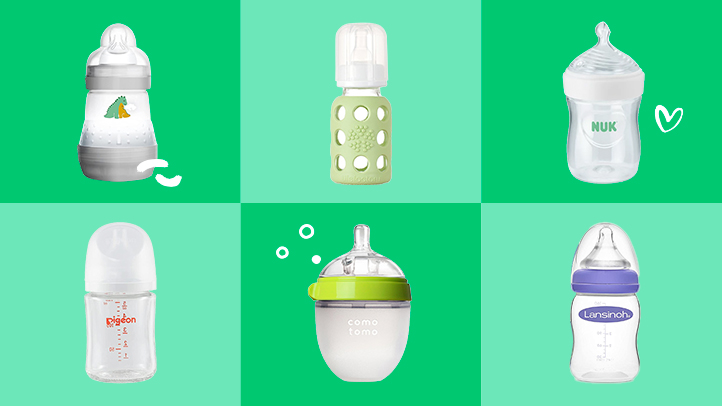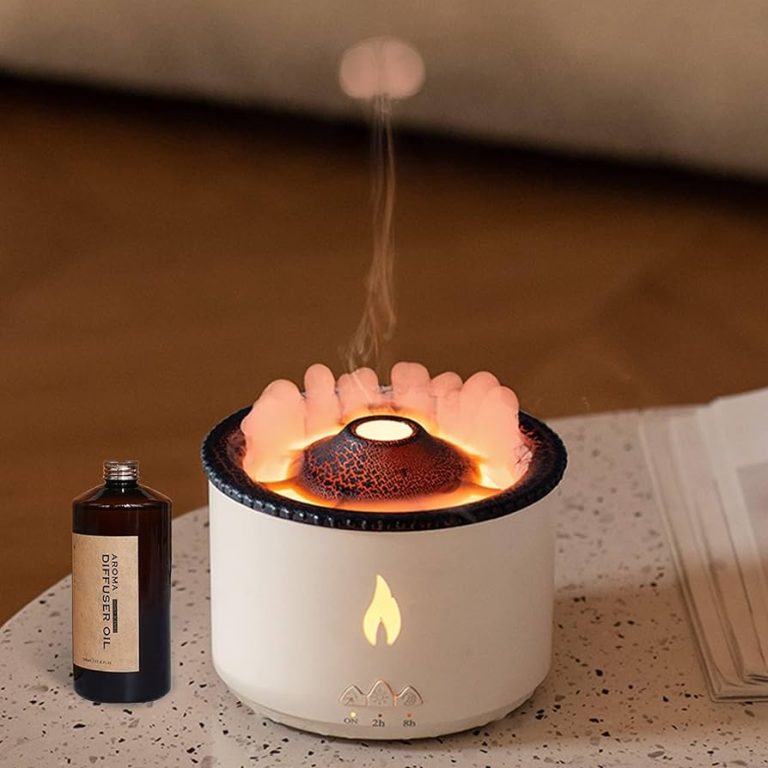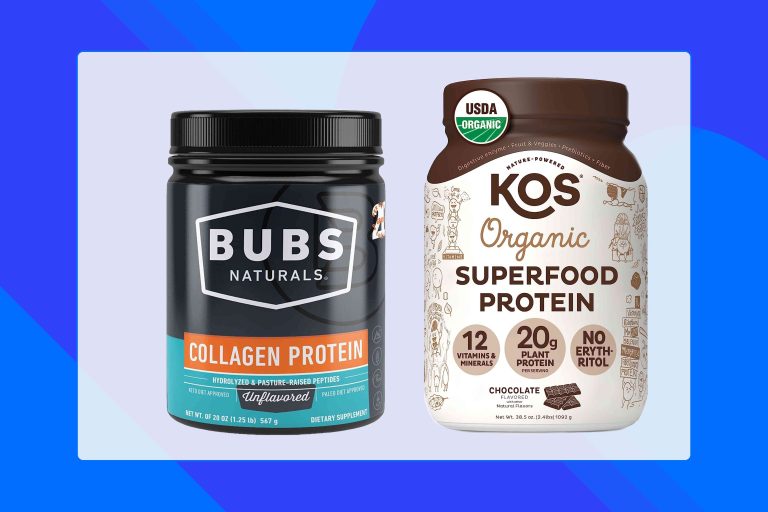9 Best Bottles for Breastfed Babies: Top Picks for a Natural Feeding Experience
Choosing the right bottle for your breastfed baby can feel overwhelming with so many options available. You want something that mimics breastfeeding to ensure a smooth transition and avoid nipple confusion. The right bottle can make feeding times easier for both you and your baby, ensuring they’re comfortable and well-fed.
In this article, you’ll discover the 9 best bottles for breastfed babies, each designed to replicate the natural breastfeeding experience. Whether you’re a new parent or looking to switch up your current bottles, these recommendations will help you find the perfect fit for your little one.
Factors to Consider When Choosing Bottles for Breastfed Babies
Choosing the right bottle can make a significant difference in your breastfeeding journey. Let’s explore the key factors you should look for.
Nipple Shape and Flow
Opt for bottles with nipples that closely resemble the shape and feel of a mother’s breast. These usually have a wide base and a natural texture. Look for variable flow options so you can match your baby’s sucking strength, ensuring a smooth transition.
Material Safety and Durability
Ensure the bottles are made from BPA-free materials to protect your baby from harmful chemicals. Consider bottles made of silicone, glass, or high-quality plastic. These materials not only ensure safety but also durability, making them a great long-term investment.
Ease of Cleaning and Maintenance
Choose bottles with simple designs and fewer parts to make cleaning easier. Dishwasher-safe bottles can save you time and effort. Look for wide-neck bottles, as they are easier to clean and help maintain hygiene, reducing the risk of bacterial buildup.
Top 9 Bottles for Breastfed Babies
Choosing the right bottle for your breastfed baby can ease the transition between breastfeeding and bottle-feeding. Here are the top nine bottles that mimic the natural breastfeeding experience.
1. Comotomo Natural Feel Baby Bottle
Comotomo’s Natural Feel Baby Bottle features a soft, squeezable silicone body that mimics the feel of a mother’s breast. Its nipple has dual anti-colic vents to reduce air intake, helping prevent discomfort for your baby. The wide-neck design makes cleaning easy.
2. Philips Avent Natural Bottle
Philips Avent Natural Bottle comes with a wide, breast-shaped nipple that promotes a natural latch, similar to breastfeeding. Its anti-colic valve is designed to reduce crying and discomfort by venting air away from your baby’s stomach. The ergonomic shape is easy for tiny hands to hold.
3. Dr. Brown’s Options+ Wide-Neck Baby Bottle
Dr. Brown’s Options+ Wide-Neck Baby Bottle features an anti-colic vent system that prevents air bubbles, reducing gas and spit-up. Its wide neck promotes easier cleaning, and the soft silicone nipple closely resembles a mother’s breast, making the transition seamless.
4. Tommee Tippee Closer to Nature Baby Bottle
Tommee Tippee’s Closer to Nature Baby Bottle is designed for an easy latch-on due to its breast-like nipple created to mimic the natural flex and movement of a mother’s breast. The slow flow nipple and anti-colic valve reduce excessive airflow, ensuring comfort during feeding.
5. MAM Easy Start Anti-Colic Bottle
MAM’s Easy Start Anti-Colic Bottle is perfect for reducing colic symptoms, such as gas and fussiness, thanks to its vented base that regulates pressure during feeding. The nipple is designed to feel just like mom, and its wide openings make cleaning and assembly straightforward.
6. Nanobébé Breastmilk Baby Bottle
Nanobébé Breastmilk Bottle stands out with its unique design that heats breastmilk evenly and quickly, preserving essential nutrients. The shape mimics the natural breast, encouraging a comfortable latch. Its anti-colic system reduces the risk of discomfort.
7. NUK Simply Natural Baby Bottle
NUK’s Simply Natural Baby Bottle features nipples with multiple holes—just like a mother’s breast—that provide a natural, consistent flow. The ergonomic bottle shape is easy to hold, and the anti-colic air system minimizes air intake.
8. Evenflo Feeding Angled Premium Proflo Vented Plus Baby Bottle
Evenflo’s Angled Premium Proflo Vented Plus Bottle uses a unique angled design that promotes a semi-upright feeding position to help reduce ear infections and reflux. Its integrated Proflo Venting Technology helps eliminate air bubbles, reducing tummy troubles.
9. Lansinoh Breastfeeding Bottles with NaturalWave Nipple
Lansinoh’s Breastfeeding Bottles feature the NaturalWave Nipple, which is clinically proven to reduce nipple confusion, making it easier to switch between breast and bottle. The nipple design encourages your baby’s natural sucking motion, and the air ventilation system reduces intake of gas.
Benefits of Choosing the Right Bottle for Breastfed Babies
Promoting a Smooth Transition
Ensuring a smooth transition from breast to bottle is critical. Choosing the right bottle helps maintain a familiar feeding experience for your baby. Bottles designed to mimic the breast’s shape and feel make it easier for your baby to latch, reducing frustration and making feeding time less stressful for both you and your baby.
Supporting Oral Development
Supporting oral development is essential for your baby’s growth. The right bottle ensures that your baby uses similar mouth and jaw movements as they do during breastfeeding. Bottles with a natural nipple shape encourage proper tongue placement and jaw movements, aiding in the development of essential oral motor skills that are helpful for speech and eating solid foods later on.
Reducing Colic and Discomfort
Reducing colic and discomfort is a top priority for parents. Bottles equipped with anti-colic vents or systems prevent air from being swallowed during feeding, which can lead to less gas, colic, and overall discomfort. By minimizing air intake, these bottles alleviate tummy troubles, ensuring a more comfortable and pleasant feeding experience for your baby.
How to Introduce a Bottle to a Breastfed Baby
Introducing a bottle to a breastfed baby can be a delicate process. Follow these tips to ensure a smooth transition.
Choosing the Right Time to Introduce the Bottle
Wait until breastfeeding is well-established, typically around 4 to 6 weeks, before introducing a bottle. Ensure that your baby is comfortable and not overly hungry or tired. Observe feeding cues to identify the best moment for introducing the bottle.
Techniques for a Successful Transition
Use a slow-flow nipple to mimic breastfeeding and prevent nipple confusion. Offer the bottle in a calm, quiet environment to help your baby focus. Hold your baby in a semi-upright position, similar to breastfeeding, for a familiar experience. Have someone other than the primary breastfeeding parent offer the bottle initially to reduce confusion.
Maintaining Breastfeeding Alongside Bottle Feeding
While introducing a bottle to a breastfed baby can be beneficial, it’s essential to ensure it complements, rather than disrupts, breastfeeding. Here are some tips to help you maintain breastfeeding alongside bottle feeding.
Balancing Bottle and Breast Feeding
Balancing bottle and breast feeding requires attention. Alternate between the two methods to ensure your baby remains comfortable with both. It’s crucial to offer the breast first before the bottle to maintain preference and support milk supply.
Use paced bottle feeding to mimic breastfeeding. Hold the bottle horizontally to control the flow and allow your baby to take breaks, similar to breastfeeding. This practice helps in reducing nipple confusion and promotes a natural feeding rhythm.
Tips for Ensuring Adequate Milk Supply
Maintaining milk supply while incorporating bottle feeding is vital. Nurse frequently, as direct breastfeeding stimulates milk production more efficiently. Aim to feed on demand to meet your baby’s needs and sustain your supply.
Pump regularly to mimic feeding times, especially if you’re away from your baby. Use a high-quality breast pump, and consider power pumping sessions to boost supply. Store expressed milk properly to keep it safe for future use.
Stay hydrated and maintain a balanced diet to support lactation. Foods like oats, almonds, and dark leafy greens can help. Balance rest and relaxation to avoid stress, which can impact milk production negatively.
By following these strategies, you can ensure a harmonious balance between breast and bottle feeding, allowing your baby to benefit from both.
Conclusion
Choosing the right bottle for your breastfed baby is crucial for ensuring a smooth transition between breast and bottle feeding. By selecting a bottle that mimics the natural breastfeeding experience and reduces colic, you can make feeding times more comfortable for your baby. Remember to introduce the bottle once breastfeeding is well-established and maintain a calm environment during feedings.
Balancing breastfeeding with bottle feeding requires careful planning and attention. Using paced bottle feeding and ensuring an adequate milk supply through nursing, pumping, and a balanced diet can help you maintain this balance. These strategies will support both you and your baby in enjoying a harmonious feeding routine.
Frequently Asked Questions
Why is it important to choose the right bottle for a breastfed baby?
Choosing the right bottle helps mimic the breastfeeding experience, making it easier for the baby to transition between breast and bottle. It also helps prevent nipple confusion and ensures the baby is comfortable and reduces issues like colic.
What features should I look for in a bottle for a breastfed baby?
Look for bottles that mimic a mother’s breast in shape and feel, have anti-colic features, and allow for paced feeding. These features help create a seamless transition and reduce feeding issues.
When should I introduce a bottle to my breastfed baby?
It’s recommended to wait until breastfeeding is well-established, usually around 4-6 weeks. This timing helps ensure that the baby is comfortable with breastfeeding before introducing a bottle.
How can I maintain breastfeeding while also bottle feeding?
Balance both methods by using paced bottle feeding and ensuring your baby continues to nurse regularly. Also, maintain your milk supply through consistent pumping and nursing and a balanced diet.
What is paced bottle feeding and why is it important?
Paced bottle feeding involves letting the baby control the flow of milk by taking breaks, similar to breastfeeding. This method helps prevent overfeeding and gas and supports a smoother transition between breast and bottle.
How can I ensure an adequate milk supply when using both breast and bottle feeding?
Regular nursing, consistent pumping sessions, and a balanced diet are key to maintaining an adequate milk supply. Ensure you are hydrated and well-nourished to support your milk production.
Can bottle feeding cause nipple confusion?
Yes, bottle feeding can sometimes cause nipple confusion if introduced too early. Choosing a bottle that mimics the breast and waiting until breastfeeding is established can help minimize this risk.
What should I do if my baby refuses the bottle?
Try different bottle types and nipples. Have someone else offer the bottle when you are not around, and create a calm feeding environment. Sometimes, patience and persistence are needed to help your baby adjust.





